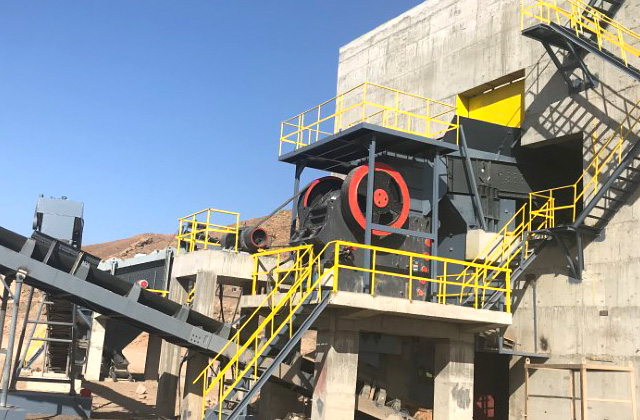A stationary crushing plant is a facility that processes rocks, minerals, and other materials to produce various sizes of finished products for different applications. It is designed to remain in one location for an extended period, providing a reliable and efficient crushing solution. In this response, I will explain the process of a stationary crushing plant in detail.

Equipment Selection:
The choice of equipment for a stationary crushing plant depends on factors such as the type of material to be processed, the required production capacity, and the final product specifications. Commonly used equipment includes primary crushers, secondary crushers, screens, and conveyors. Primary crushers are typically jaw crushers or gyratory crushers, which break the initial material into smaller pieces. Secondary crushers, such as cone crushers or impact crushers, further reduce the size of the material.
Feeding:
The stationary crushing plant receives the material to be processed through a primary feeder, which regulates the flow of material into the primary crusher. The feeder ensures a steady supply of material and prevents overloading of the crusher.
Primary Crushing:
The primary crusher, often a jaw crusher, receives the material from the feeder and reduces its size further. The crusher applies compressive force to break the rocks or minerals into smaller, more manageable sizes. The crushed material is then conveyed to the next stage of the process.
Secondary Crushing:
In some cases, the material from the primary crusher is sent to a secondary crusher for further reduction. The secondary crusher, such as a cone crusher or impact crusher, further breaks down the material into even smaller sizes. This stage is important for achieving the desired final product specifications.
Screening:
After the secondary crushing stage, the crushed material may undergo screening to separate it into different sizes. Screens are used to classify the material based on its size. Different screen decks or mesh sizes allow the separation of various fractions, such as fine aggregates or larger stones, depending on the application requirements.
Stockpiling and Storage:
Once the material is screened, it may be stockpiled in different storage areas based on its size and application. This allows for efficient management and retrieval of different products when needed.
Conveying:
Throughout the entire process, conveyors play a crucial role in transporting the material between various stages and storage areas. They ensure a continuous flow of material, reducing downtime and optimizing the production capacity of the crushing plant.
Dust Suppression:
To mitigate dust emissions, stationary crushing plants are equipped with dust suppression systems. These systems use water sprays or other techniques to minimize the spread of dust during the crushing and screening processes, improving air quality and ensuring a safe working environment.
Maintenance and Monitoring:
Regular maintenance is vital to ensure the smooth operation and longevity of a stationary crushing plant. This includes routine inspections, lubrication of equipment, and timely replacement of worn-out parts. Additionally, monitoring systems are employed to track the performance of the plant, identify potential issues, and optimize production efficiency.
A stationary crushing plant processes rocks, minerals, and other materials through primary and secondary crushing, screening, and storage stages. It requires careful site preparation, equipment selection, and maintenance to ensure efficient operation and the production of high-quality finished products.
